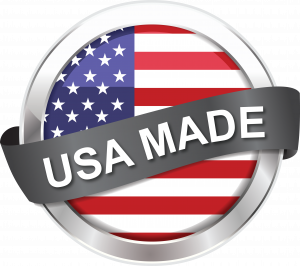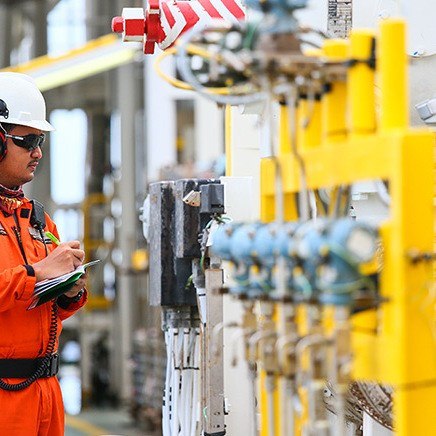With a growing emphasis on buying American-made products, it is becoming increasingly important to understand the differences between a product that is labeled "Made in USA" and one that has the country of origin as the "USA". So what does the "Made in USA" label mean and what distinguishes this label from simply having a country of origin as the "USA"?
Country of Origin
 Magnehelic® Differential Pressure Gage, Series 2000
Magnehelic® Differential Pressure Gage, Series 2000 Non-preferential rules of origin
Non-preferential rules of origin are applied over two areas of interest:
-
Goods that are wholly the growth, product, or manufacture of one particular country known as the wholly obtained principle
-
Goods that consist of components from more than one country that have undergone substantial transformation
The substantial transformation principle is used to determine the country of origin based on the last country where the product underwent a transformation to a new and distinct article of commerce. This transformation is based on a change in name, character, or use. Generally, substantial value-add has taken place during this transformation.
Preferential rules of origin
Preferential rules of origin apply to products that are eligible for duty-free status under U.S. trade preference programs. These programs are established to support and promote U.S. trade objectives and goals. As detailed in the International Trade: Rules of Origin report, these trade preference programs include:
- Generalized System of Preferences (GSP)
- African Growth and Opportunity Act (AGOA)
- Free trade agreements (FTAs)
- United States-Mexico-Canada Agreement (USMCA)
- United States-South Korea Free Trade Agreement (KORUS FTA)
The two criteria areas that apply in the non-preferential rules also apply to the preferential rules. However, the preferential rules also take into account the stipulations set forth within whichever agreement applies to the product in question.
These agreements generally utilize 3 tests to determine where products originate:
- Tariff Shift Test - The Harmonized Tariff Schedule (HTS) tariff classification of the final product is different from the components used to make the product, as a result of production occurring in that country. The proper rules of the HTS system must be applied.
- Technical Test - Certain tests may be applied to determine if the product was "transformed", such as a chemical or molecule change burning the final processing.
- Logical or Regional Value Content (RVC) Test - The value added must be above a certain percentage of the total cost of the product. This value varies depending on the countries involved and the product.
Important Note: The agreement and final product determine which of the above methods can be applied. The manufacturer cannot simply choose the one that would be beneficial.
For more in-depth information on the non-preferential and preferential rules of origin, follow the link to the International Trade: Rules of Origin report by the Congressional Research Service.
Made in USA Labeling
When looking for quality products in the USA, chances are the "Made in USA" label is a crucial part of that search. This is due to the strict regulations that "Made in USA" label products are required to meet. So, what determines if a product can have a "Made in USA" label?
By definition, stated on the Federal Trade Commission's website, the product must be "all or virtually all" made in the U.S. The term "United States" as referred to in the Enforcement Policy Statement, includes the 50 states, the District of Columbia, and the U.S. territories and possessions. This means that any significant parts must be manufactured in the USA and the final assembly must take place in the USA.
In other words the manufactured product must not contain foreign materials, or if it does, then it must be a negligible amount. An example taken directly from the Federal Trade Commission's website states:
A company produces propane barbecue grills at a plant in Nevada. The product's major components include the gas valve, burner and aluminum housing, each of which is made in the U.S. The grill's knobs and tubing are imported from Mexico. An unqualified Made in USA claim is not likely to be deceptive because the knobs and tubing make up a negligible portion of the product's total manufacturing costs and are not significant parts of the final product.
As a manufacturer based in the U.S. with many manufacturing facilities in the U.S., the "Made in USA" mark is something that DwyerOmega, Inc. and our customers place a great value on. It symbolizes a high quality product manufactured by skilled individuals.
There are two types of statements used for labeling. The first is an unqualified label, such as, "Made in USA" or other text that implies the same meaning, "American Made", etc. The second is a qualified claim. "Assembled in USA", "60% US Content", or "Assembled in the USA of US and Chinese parts". Additional rules apply to qualified statement labeling.
It should be noted that the Country of Origin (COO) is mainly used on paperwork to determine duties and tariffs. The product labeling is mainly used to inform customers. These two systems are controlled by different agencies. Almost always, a product that can be labeled "Made in USA" will have a COO of USA. The reverse is frequently not true.
Check out the DwyerOmega catalog to find the many DwyerOmega products with a "Made in USA" mark like DwyerOmega's flagship product, the Magnehelic® differential pressure gage. DwyerOmega, Inc. is a manufacturer based in the United States with manufacturing facilities in Michigan City, Indiana; Kingsbury, Indiana; Wolcott, Indiana; Kansas City, Missouri; and Fergus Falls, Minnesota.

